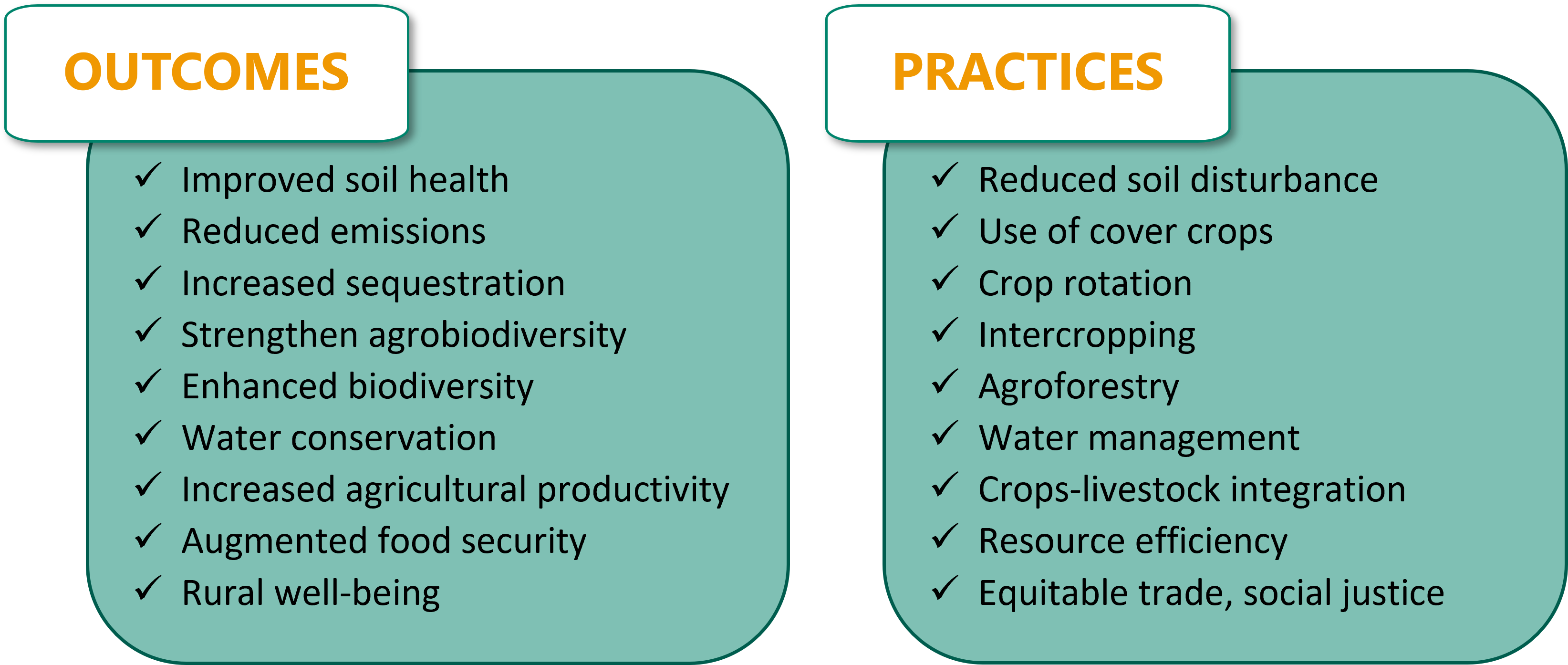Regenerative Agriculture Offers Pathway to More Sustainable & Equitable Food Systems
By Romano De Vivo, Vice President of Sustainability
Food systems face many challenges, including climate change, biodiversity loss, population growth, and dietary changes. Balancing trade-offs in such a complex landscape can be daunting, especially when striving to increase productivity, reduce emissions, give back land to nature, and ensure all farmers have a living income. However, an emerging consensus points towards a solution: regenerative agriculture. While not a new concept, regenerative agriculture shares common roots with conservation agriculture, climate-smart agriculture, and agroecology.
Promoting regenerative agriculture practices can lead to numerous benefits for both land and people, including improved soil health, increased carbon sequestration, enhanced biodiversity, water conservation, increased agricultural productivity, improved food security, and improved rural well-being. These factors contribute to a more resilient food system that benefits society and the economy, making regenerative agriculture a powerful solution to build a more sustainable and equitable food system. The convergence of technology and practice is crucial in supporting this shift.
With a focus on soil health, regenerative agriculture practices help ensure soils are more resilient to extreme weather, droughts, floods, pests, and diseases while requiring fewer inputs. Healthy soil also captures carbon to mitigate climate change, supporting ecosystem growth and habitat creation. Farmers following regenerative agriculture principles can contribute to transformational outcomes by implementing reduced soil disturbance, use of cover crops, crop rotation, intercropping and agroforestry, water management, crop-livestock integration, and better resource efficiency.

These practices are not a new ‘fad,’ but rather a collection of pragmatic and proven farming techniques appropriate for many farming systems, from conventional to organic. However, to fully realize the potential of regenerative agriculture, we need innovation that can provide the tools and resources necessary to implement these practices at scale. From precision agriculture technologies that optimize inputs and reduce field losses to data analytics tools that help farmers measure and monitor soil health and biodiversity, plant science technologies can help farmers achieve better outcomes and improve their livelihoods.
For these innovations to make a real difference, they must be accessible to farmers worldwide. At CropLife International, we advocate for regulatory frameworks and predictable trade environments that ensure farmers globally have equal access to these critical innovations that can positively impact agricultural productivity, food security, and climate action.
We must also measure the outputs stemming from these new technologies and techniques to encourage adopting regenerative agriculture practices. Combining quantitative and qualitative methods, we can comprehensively understand agriculture and identify strategies for promoting its adoption. Quantitative methods provide empirical data on expected results, such as improvements in soil health, biodiversity, and ecosystem services. Qualitative methods allow farmers and other stakeholders to share their experiences and provide feedback on improving practices to meet their needs better.
While challenges exist in implementing regenerative agriculture, such as the need for supportive policies, access to finance, and broad stakeholder collaboration, opportunities exist to leverage a convergence of technology and practice, of innovation and tradition, to address the critical issues facing our global food system. By promoting regenerative agriculture practices, we can transform our food systems to be more sustainable and equitable, benefiting both people and the planet.
To achieve this transformation, it is essential to emphasize the role of regenerative agriculture as a powerful solution to our food systems’ challenges, including productivity, climate change, biodiversity loss, and the need for sustainable and equitable agricultural practices. As we celebrate Earth Day, we must seek all possible ways to protect our planet. By working together to prioritize regenerative agriculture practices and sharing their potential for transformational impact, we can create a better future for ourselves and our world.
